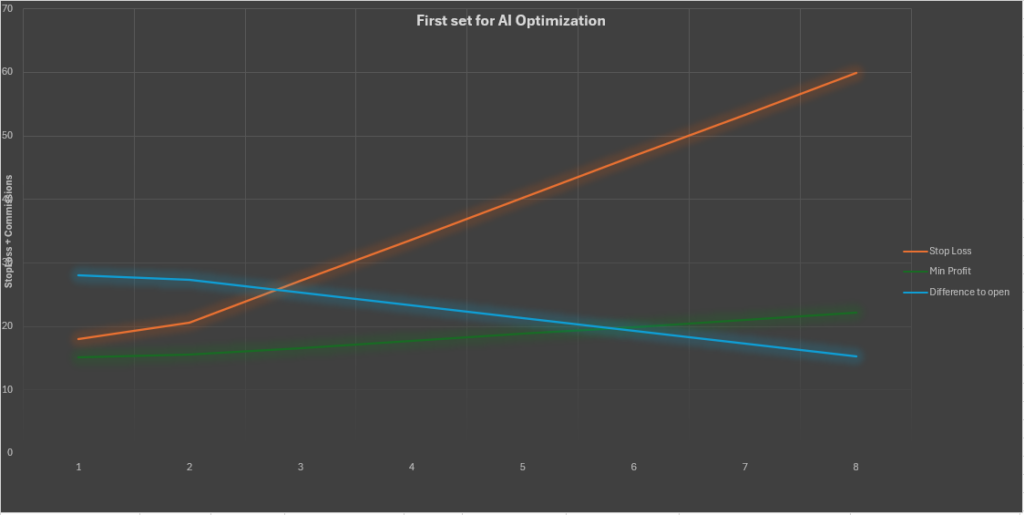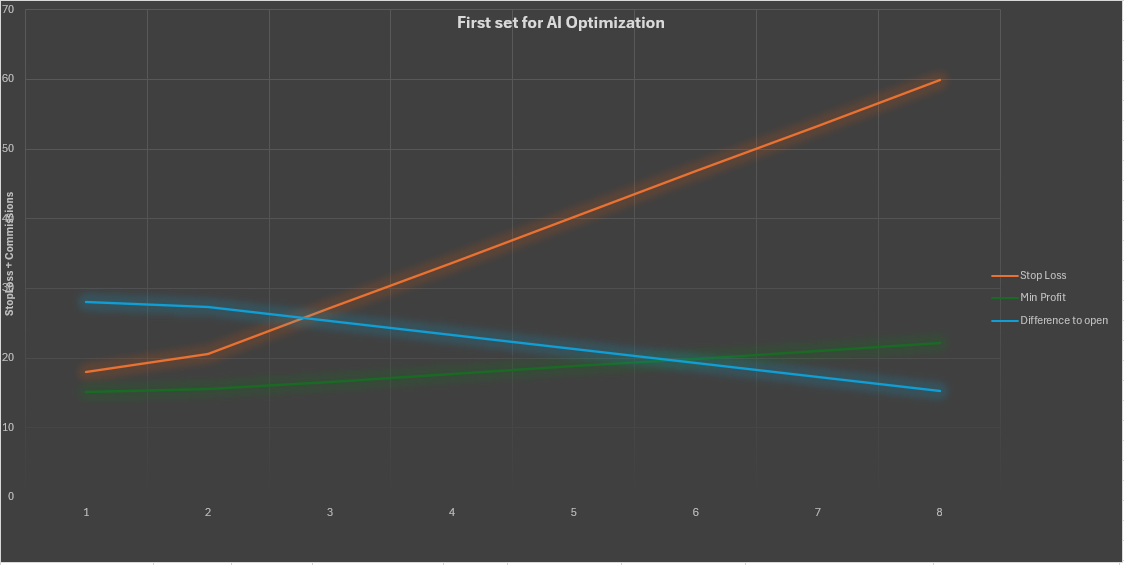Advanced AI Optimization Techniques for Latency Arbitrage Strategies in SharpTrader Friday January 19th, 2024 – Posted in: Arbitrage Software – Tags: ai forex, ai forex trading, ai forex trading bot, sharptrader
Context
- Introduction
- Creating preset files for Forex latency arbitrage for brokers and prop firms
- AI optimization of latency arbitrage – Step one: Assess the spread for the trading pair.
- AI optimization of latency arbitrage – Step two
- AI optimization of latency arbitrage – Step three: optimize spread filters
- AI optimization of latency arbitrage – Step four – optimize the trading lot size.
- AI optimization of latency arbitrage – Step four – optimize the trading lot size
- Advancing Forex Trading: AI Technology, Market Adaptation, and Future Trends
- Technology Behind AI Optimization
- Market Analysis and Strategy Adaptation
- Future Trends and Predictions
- Forex Latency Arbitrage AI optimization – Testimonials
- Conclusion
Introduction
In the dynamic and ever-evolving world of financial trading, pursuing efficient and profitable strategies is a constant endeavor. This article delves into the intricate realm of latency arbitrage strategies, specifically focusing on the innovative application of AI optimization within the SharpTrader platform. We will embark on a journey through the meticulous process of creating and optimizing preset files for latency arbitrage, employing cutting-edge AI techniques. Our exploration will cover the foundational aspects of these strategies and delve into advanced customization, ensuring that traders can harness the full potential of latency arbitrage in today’s competitive market. Join us as we unravel the nuances of AI-driven optimization and its transformative impact on latency arbitrage trading.
Creating preset files for Forex latency arbitrage for brokers and prop firms
In this article, I would like to share a detailed algorithm for creating preset files for latency arbitrage strategies embedded in the SharpTrader arbitrage platform using AI optimization. We recommend using latency lock strategies LockCL1- LockCL3 for AI optimization, but not classic latency arbitrage. Therefore, when I refer to latency arbitrage in the article, I mean lock latency arbitrage. Let’s start with the optimization of LockCL2. If you use the same broker for both sides, you can optimize just one side. If different brokers are used, both sides need to be optimized.
Video 1 – How to use AI Optimizer for SharpTrader strategies’ AI optimization
I would like to point out that the method described can be effectively used for passing in prop firm contests and live trading. In such scenarios, it’s crucial to deploy the LockCL2 strategy on one account, incorporating not only the AI-optimized presets but also a hard stop and equity control tailored according to the specific requirements of the prop firm. Additionally, the possibility of using the LockCL2 strategy across two accounts should be considered. When dealing with conventional forex brokers, it’s strongly recommended to use two accounts, both for obtaining presets through AI optimization and for subsequent trading. The choice of lock latency arbitrage strategy depends on the initial setup.
We tested and developed this algorithm based on our knowledge of server anti-arbitrage plugins, AI optimizer tests, and user feedback.
AI optimization of latency arbitrage – Step one: Assess the spread for the trading pair.
In elegant terms, the values of Stop Loss, Min Profit, and Diff to Open are intricately tied to the combined measure of spread and commission, essentially the cost of the transaction. Drawing from our extensive experience in fine-tuning arbitrage strategies, we’ve found that these parameters are not linearly dependent on the spread plus commission but can be approximated for initial calculations.
To capture this relationship, we employ the classic linear equation form, y = mx + b, where ‘m’ represents the slope, dictating the angle at which the line intersects the x-axis, and ‘b’ denotes the y-intercept, indicating its vertical shift.
To determine the slope coefficient (m) in a linear equation, calculate the difference in y-values between two points and divide it by the difference in x-values of the same points. With two points (x1, y1) and (x2, y2), use the formula: m = (y2 – y1) / (x2 – x1).
To find the y-intercept (b) of the linear equation, substitute a known slope value and one of the points into the equation y = mx + b. For example, using the coordinates of point (x1, y1), the equation for the y-intercept becomes: y1 = mx1 + b. From this, we can express b as:
b = y1 – mx1, where b is the y-intercept of the equation.
We’ve formulated specific linear equations for each parameter through empirical analysis, elegantly relating them to the combined value of spread and commissions. These equations are as follows:
- For Stop Loss: Stop Loss = 1.31 × (Spread + Commissions) + 7.52
- For Min Profit: Min profit = 0.22 × (Spread + Commissions) + 13.34
- For Diff to Open: Diff to open = -0.4 × (Spread + Commissions) + 31.28
We’ve crafted a user-friendly Excel sheet and accompanying diagrams to aid in the practical application of these theoretical insights. These tools are designed to guide traders in determining the optimal values of Stop Loss, Min Profit, and Diff to Open for their initial settings set, simplifying the complex interplay of variables in arbitrage strategy configuration.

Fig 1. – Diagram: determination Stop Loss, Min Profit, and Diff to Open
Trade with the minimum lot. In our example, it’s 0.01. Create two more settings sets for the same trading instrument. In our example, this is EURUSD. Change only the Diff to open and min profit values in the settings sets. In set number 2a, increase by 20%; in set 3, decrease by 20%.

Fig. 2 – First step for Arbitrage Strategy AI Optimization
AI optimization of latency arbitrage – Step two
Optimize stop loss and take profit. After the optimization, apply the settings to the two sets created for step 1 and delete or disable the third. In the second step of AI optimization of latency arbitrage, we will optimize only the Stop Loss and Take Profit values. For the first set, reduce the stop loss and take profit values by 10%; in our example, we get values of 16 and 108; for the second set, increase by 10%; for our example, we get values of 20 and 132. After the optimization, apply the settings to the two sets created for step 2.

Fig. 3 – Second step for Arbitrage Strategy AI Optimization
AI optimization of latency arbitrage – Step three: optimize spread filters.
In the third step, we recommend optimizing the Max spread slow, and Max spread fast filter values. Using the same technique as for step two, we change the Max spread slow and Max spread fast values by 10%, but for the first set, we increase by 10%, and for the second, we decrease by 10%. In this case, set number one should process more arbitrage situations, but the risk of opening (closing) orders with a spread increases, and therefore the risk of losing orders. In the second case, by reducing the size of the spread filters, we reduce the number of orders due to more conservative market entry and thus can miss profitable entries.
After the optimization, apply the settings to the two sets created for step 3.
AI optimization of latency arbitrage – Step four – optimize the trading lot size.
In most cases, the deterioration of conditions for arbitrage trading can occur in case of an increase in the size of the trading lot. However, we have encountered situations where the deterioration of conditions for arbitrage trading occurred when reducing the trading lot. This can be explained by the fact that the anti-arbitrage platinum on the broker’s server is also set to switch the account to A book in case of increasing the trading lot, but the trading conditions on A book at this broker are better than on B book. The trader needs to assess the size of the lot he plans to use for arbitrage trading. If you plan to trade with a lot size = 0.1, then optimization is recommended for three settings sets: 0.1, 0.1 +50%, and 0.1 -50%.
The LockCL1 arbitrage strategy can be optimized using the AI optimizer according to the same rules as LockCL2.
Subtleties of setting up the LockCL3 arbitrage strategy
The LockCL3 arbitrage strategy uses only one side to open locking orders, so we recommend optimizing only the side on which trading is carried out.
Advancing Forex Trading: AI Technology, Market Adaptation, and Future Trends
Technology Behind AI Optimization
AI optimization in latency arbitrage strategies typically involves machine learning algorithms that can analyze vast market data to identify profitable trading patterns. These algorithms are designed to adapt to changing market conditions, learning from historical data and improving predictions over time. Using AI, traders can optimize their strategies based on real-time data analysis, resulting in more efficient and profitable trades.
Market Analysis and Strategy Adaptation
Successful application of these strategies requires understanding market dynamics. AI optimization helps analyze market trends, volatility, and liquidity to adapt strategies accordingly. This dynamic adjustment is crucial, as various global economic events, geopolitical shifts, and changes in market sentiment influence the forex market. The ability of AI to process and adapt to these changes quickly can significantly enhance trading performance.
Future Trends and Predictions
As AI technology advances, its application in forex trading, especially in arbitrage strategies, is expected to become more sophisticated. Future trends may include integrating more complex machine learning models, such as deep learning, and using alternative data sources for even more nuanced market analysis. This evolution will likely lead to more robust, efficient, and adaptive trading strategies, potentially opening new opportunities for traders.
Forex Latency Arbitrage AI optimization – Testimonials
These testimonials offer a range of perspectives, emphasizing the impact and potential of the arbitrage strategies and AI technologies discussed in the article.
- John H., Prop Trader: “Since implementing the AI-optimized LockCL2 strategy, my trading efficiency has significantly improved. The ability to adapt to market changes quickly has been a game-changer for me, especially during volatile trading periods.”
- Emma B., Forex Analyst: “The insights on AI technology and market adaptation strategies offered in this article are groundbreaking. They provide a fresh perspective on forex trading in the digital age.”
- Alex D., Financial Technology Expert: “The future trends predicted in this article are spot-on. We’ve been closely monitoring the advancement in AI and its application in forex trading, and this article captures the essence perfectly.”
- Sofia R., Independent Trader: “Using these strategies has transformed my trading approach, especially the LockCL3 strategy for more conservative trades. The blend of AI optimization and market analysis is impressive.”
Conclusion
In conclusion, this article has provided a comprehensive guide to AI optimization for latency arbitrage strategies in SharpTrader. By understanding the nuances of different arbitrage strategies and applying tailored AI optimization techniques, traders can significantly enhance their trading efficacy. The discussed methods, tested and refined through practical experience and user feedback, offer a strategic advantage in the rapidly changing world of financial trading. As the trading landscape evolves, these AI-driven approaches will be invaluable in navigating market complexities and achieving consistent success in arbitrage trading. Remember, the true power of these strategies lies in their careful and informed application.
F.A.Q.
Q. We often receive feedback that after AI optimization, the artificial intelligence outputs parameter values that are the same as those set for optimization.
A. Upon error analysis, we see that the optimization was conducted with one settings set for the trading instrument.
Video – AI Optimization Step-by-Step Guide

Fig.4 – Initial setup for XAUUSD
In order for the artificial intelligence to analyze the trading results and select parameters, it is necessary to create a base settings set for the trading instrument – this could be a set suggested by the program by default, and then it should be duplicated several times to create variations of the most important settings with small steps for the most crucial arbitrage parameters as StopLoss (S/L), MinProfit, Pips for Min Profit, Trail Distance and Diff to Open.

Fig. 5 – Variations for AI optimization for XAUUSD
In this case, the artificial intelligence receives the trading results at the input: profit, execution time, and slippage, with various settings of the arbitrage program and will find the best settings in its opinion. It is also possible to use different lot sizes for each settings set, as in some cases, especially with a significant increase in lot size, slippage may increase. This could be caused by factors such as the application of broker bridge settings for transmitting orders to the A-book at a certain lot size or a lack of liquidity.
 Deutsch
Deutsch 日本語
日本語 العربية
العربية 한국어
한국어 Español
Español Português
Português Indonesia
Indonesia Tiếng Việt
Tiếng Việt 中文
中文




